

The Ugly Truths About Products
source link: https://uxplanet.org/the-ugly-truths-about-products-6366a2438ce1
Go to the source link to view the article. You can view the picture content, updated content and better typesetting reading experience. If the link is broken, please click the button below to view the snapshot at that time.
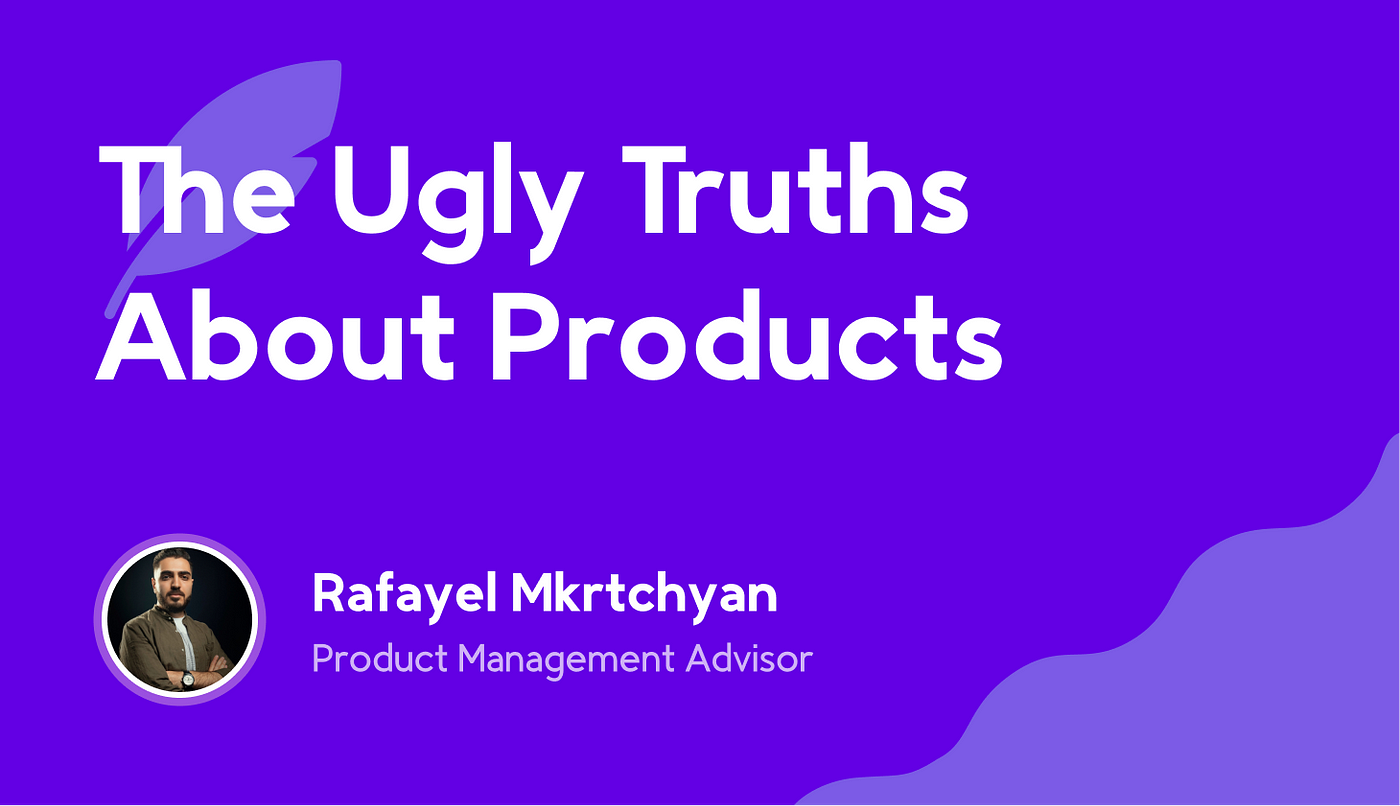
The Ugly Truths About Products
Companies like Google, Apple, and Amazon have proven that it is possible to build products that customers value. However, developing such products is not as easy as one-two-three. Customers don’t see the pain product teams go through to build winning products, but we can’t blame them for that, as most of them don’t understand the product, technical, and design challenges companies go through to build something worthwhile for them.
Customers often reap the benefits of the product; however, they become critical (or hesitant) when it is time to pay for the product.
You need to know the ins and outs of creating great products, and you also need to have patience and perseverance to build them. Many times product people make mistakes mainly because they don’t know the anatomy of great products and the ugly truths about products.
Now, it’s time that you explore the ugly truths one by one and keep them in mind whenever you decide to build a software solution. Note that those truths are universal. You will encounter them no matter what software product you are building. I don’t call them axioms, but we should always remember that they exist and we should be careful when dealing with them.
The Market Always Wins
You can have a product with interesting functionality and great design which solves a problem for a target audience, it even shows some traction, but it eventually fails. If you do your research, you will find out that many times the solution you are providing was for a problem that bothered only a tiny market, or the problem it was solving wasn’t too severe for the customers. It’s too small to make money out of it.
On the other hand, you can build a product and find out the market is declining. Let’s take the compact disk market in the United States as an example. Approximately two decades after its peak, CD album sales in the United States have dropped by 97%. Can entering such a market be a wise decision from your side? So if your market is not big enough, or it’s declining, or the problem you are trying to solve is not very severe, it becomes practically impossible to get to the unicorn status.
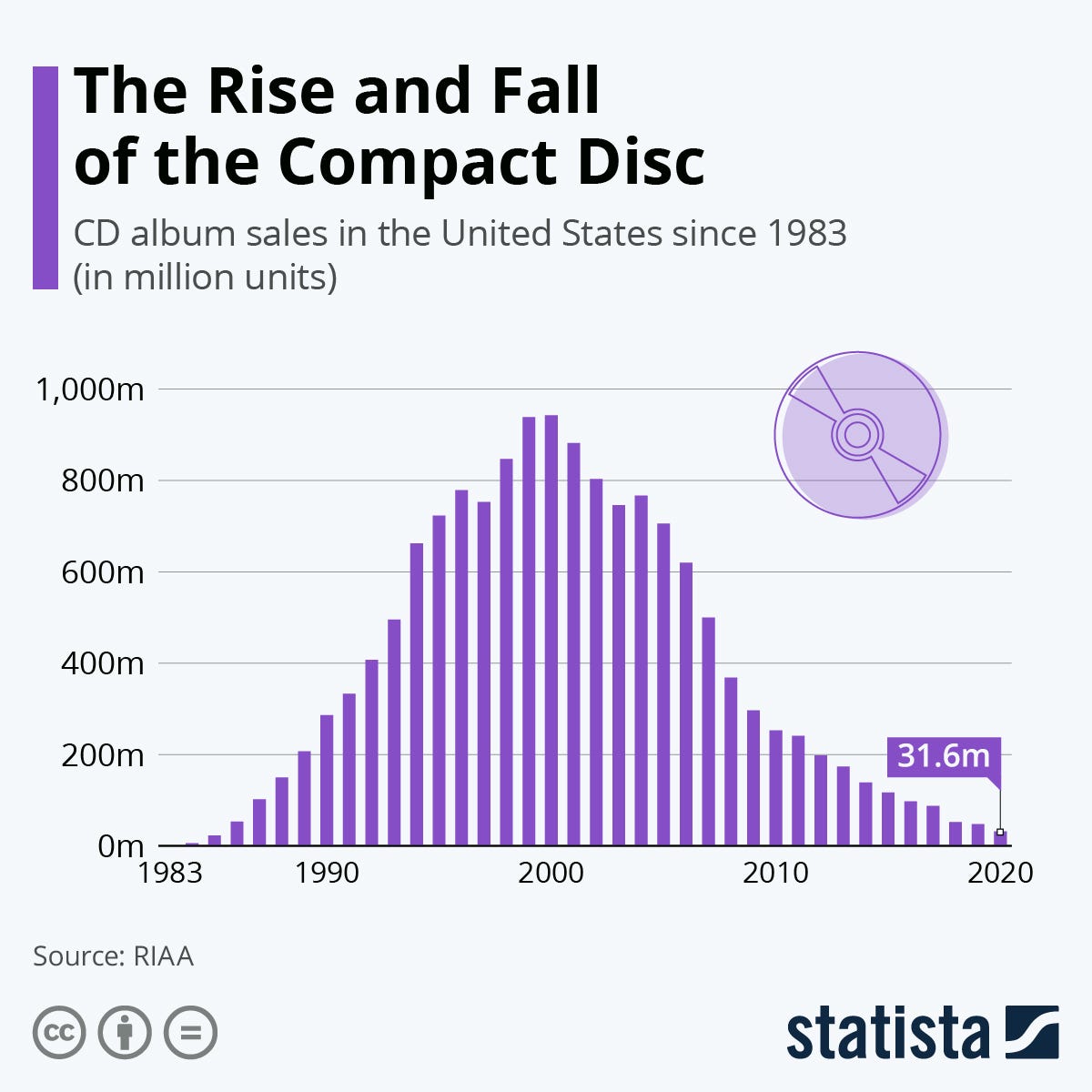
The Rise and Fall of the Compact Disc: https://www.statista.com/chart/12950/cd-sales-in-the-us/
There can be other reasons that will cause an operational struggle. For example, the market can be huge, but you might not be the only solution provider there. If your solution is not the strongest, it would be hard to imagine maintaining a growing market share in the long run. If your company stops innovating, it is hard to imagine keeping your market share in the long run as well.
Competition sometimes can be very harsh, and the market is not forgiving. You cannot fight the market; you cannot convince people to buy the solution you are offering if it’s not strong enough. Even if you use smart marketing tricks to onboard customers, it would be tough to retain those customers in the long run.
You cannot fight the market since the market always wins.
This is true not only for tech products but also for products belonging to other industries. Thus, this is not a domain-specific problem, but rather a product-specific problem. To build something worthwhile for the market, you have to know the market. You have to become an expert in your market and industry. You have to understand what type of unique value propositions will strengthen the product and make it outstanding in front of its competitors.
When creating new products or entering a new market, you should be looking for a product/market fit (PMF.) According to Marc Andreessen, “product/market fit means being in a good market with a product that can satisfy that market.” By a “good market”, we mean a market that is big enough to get you enough traction. Being able to satisfy a market like that is not an easy task, though. You need to create a product that solves severe customer pain and thus makes your customers’ lives easier. A product doesn’t only need to be lovable; it needs to be good enough for the customers to pay for it.

There Are Things We Cannot Know
This statement is true for everyone involved with technology-driven products: a CEO, a VP of Product, a product manager, or a startup founder. You can be great at doing your job, but you cannot predict everything.
Let’s imagine a scenario where a startup is trying to raise money. They only have the idea: no product yet. They are trying to get investment, but no one knows whether they are going to succeed or not, not even the investors do.
If anyone asks you: “Is this going to work?” the truth is that we can’t be entirely certain that the product is going to work. We might have enough evidence to make educational guesses about the success of the product, but at this stage, we are too far from the actual point of understanding whether this is going to work or not.
However, if you have the right insights, you might be able to make educated guesses. If you don’t have data/validated learning, you can only make blind guesses. And of course, educated guesses are always better than blind guesses. That’s why you should at least have educated guesses in place.
A common practice tells that in this stage, investors often invest in the team, but not the current product because they know that the product is going to pivot many times till it finds the right market and the right solution for that market. Experienced investors are not looking for 100% certainty because they are aware that it does not exist at this stage. All they want to see is that the market has a lot of potential, and the team is capable of solving the problem they are tackling.
When building a technology product, guesses can be many: for example, you will never know how much time it will actually take you to build a particular product unless you have created a similar product or feature previously. You cannot know this, especially if you are in the Ideation stage.
For instance, a simple payment service integration may take way longer than what you were expecting. You might expect the integration to last for two weeks, but it might turn out it takes an entire month because problems arise on your way. These little details can result in critical delays. This can be extremely critical in the startup stage since, in this stage, startups are always in danger of running out of money.
The founders of startups and product managers are also asked by the investors or executives of the company how much money a product will bring, that is to say, what its return on investment (ROI) will be. This question has no concrete answer either. The safest calculation is the following - should the product fail, you will receive zero money. Should it succeed, the revenue will depend on the scale of the success: it can be either a small- or medium-sized revenue company or a billion-dollar company in the end.
An approximate financial projection can provide certain insights regarding the projected revenue growth, but those figures many times are being either exaggerated or underestimated. Without having relevant historical financial traction for the product, it’s truly hard to say how much money the startup will generate or what would be the revenue increase of the company implementing that product.
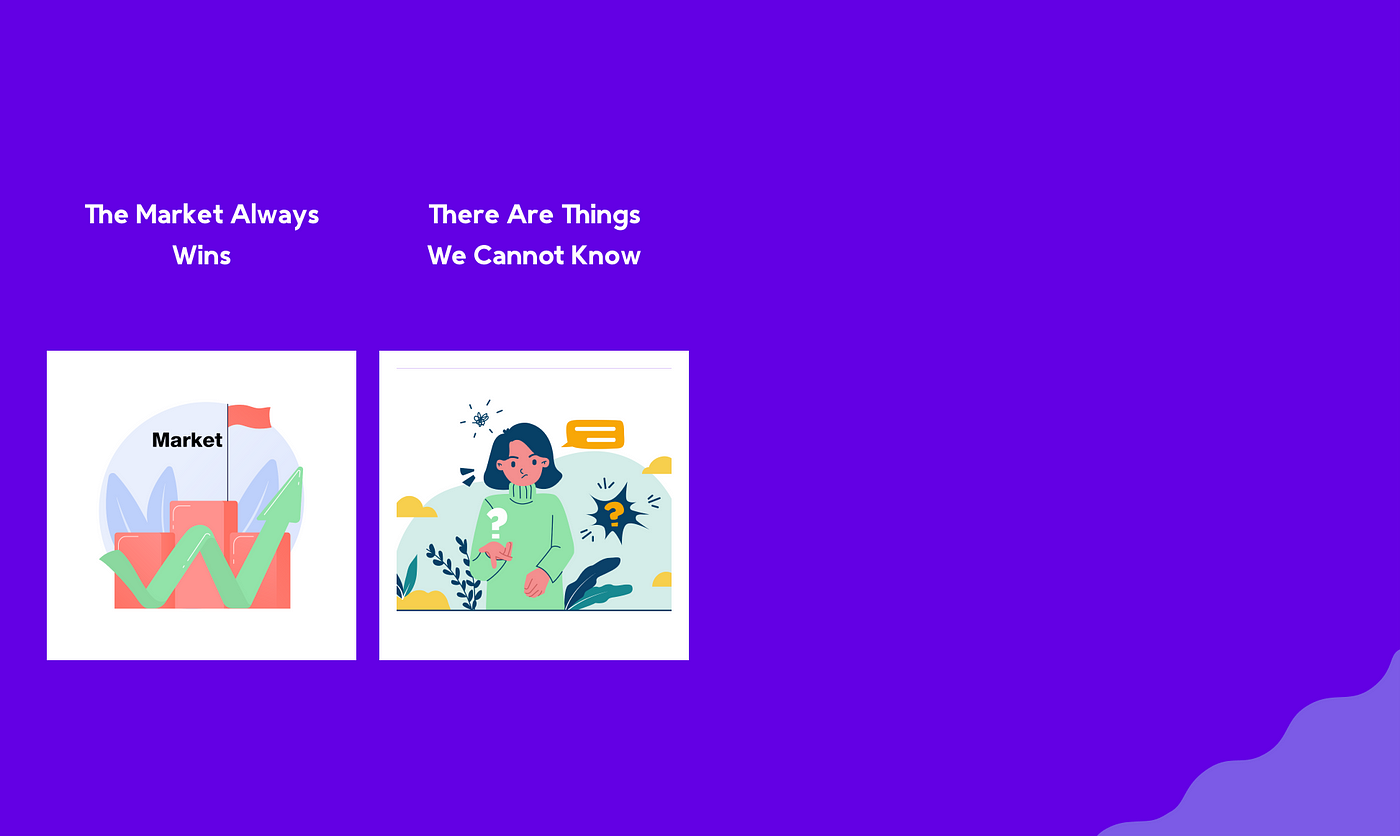
A Broken Product Promise Will Cause Customer Churn
I have already talked about the concept of product promise and its importance for the preservation of the customer base and the name of your brand. The product promise is not only about providing a reliable software solution to the customer, but it can also include things such as the interaction with various organizations of your company. For example, customer service or the support service can be considered an interaction between the customer and the brand. If that interaction is not satisfactory for the customer, the brand is going to lose the customer.
Nearly the same applies to the user experience of the product. If the promised user experience is not valid, the product is risking to lose its customers. Unfortunately, a lot of people do not see the difference between a good user interface design and the overall user experience of the product. They think that creating beautiful coloring and typography and providing necessary information is enough for user satisfaction. However, in reality, this is just a tiny portion of the experience the user gets from your product.
User experience is a much broader concept than the user interface. It comprises customer onboarding which if too long might bore the user away. User experience also encompasses the emails sent to the users aiming to increase specific conversion rates. UX also encompasses technical factors such as product speed, uptime, its ability to solve user problems effectively, and much more. If a product fails to work fast, has got a lot of bugs, or crashes regularly, then the users are very likely to abandon it.
To illustrate how important it is to have a reliable application, let me show you an example. Imagine you have a FinTech application where thousands of financial transactions are being processed on an hourly basis. Should the application crash, it might result in thousands of dollars lost.
A common technique used to measure the efficiency of user experience from the design point of view is the calculation of clicks it takes for a user to achieve a specific goal. In case the goal is one of the product’s primary actions, it should require as few steps as possible. Think about this in a way that in each additional step you might lose some percentage of the customer conversion. There is a famous product term called “easy as one-two-three.” The closer we get to these numbers, the better the chances of having reasonable conversion rates.
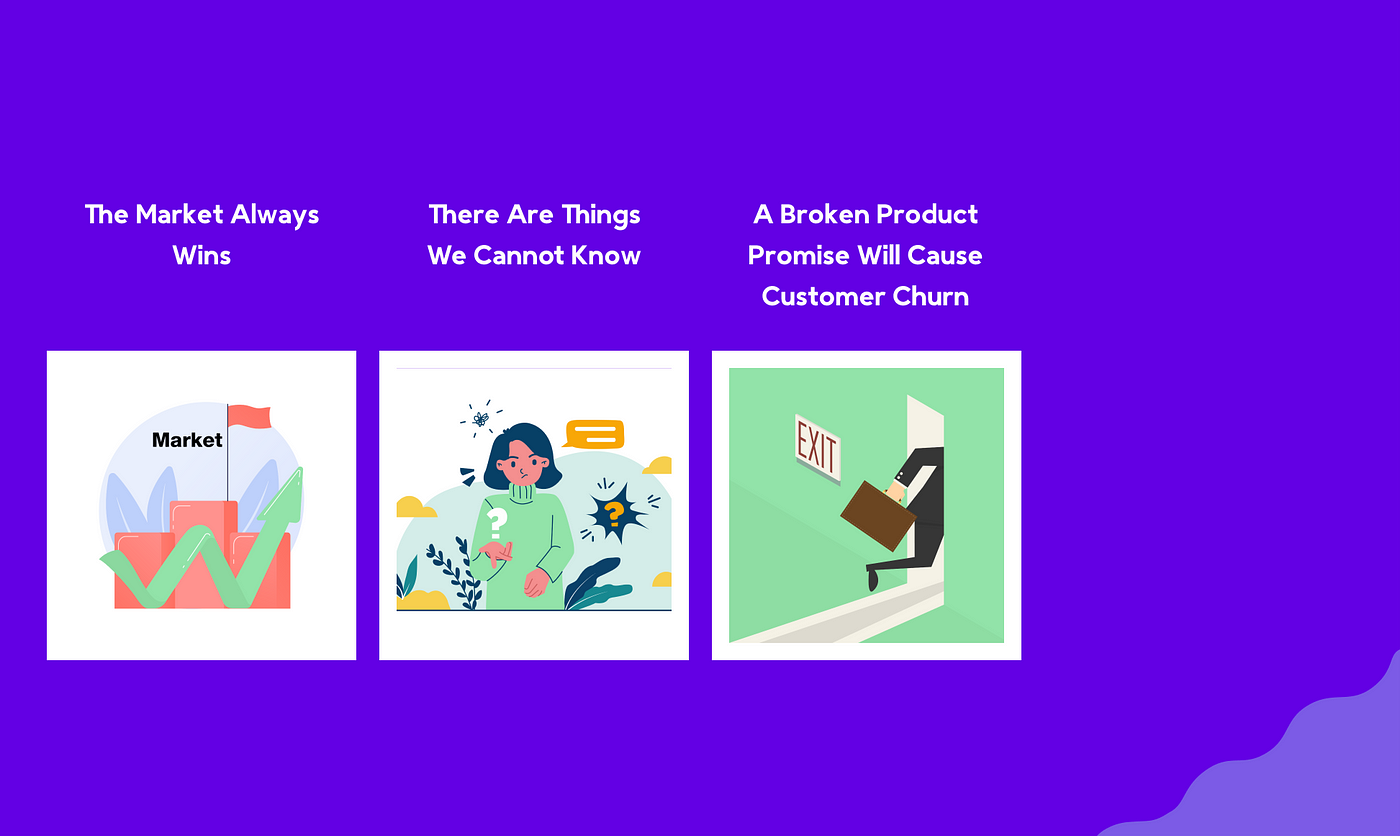
There Is No Perfect Product
Having an ideal solution from the first attempt is impossible - it takes time and determination to build something that customers love. For a lot of users, Instagram might be considered as a perfect product. They love it for ease-of-use and clean design and usefulness and a lot of other things. Instagram solves a lot of user problems. However, ask any product manager at Instagram if their product is perfect. Their answer will be a loud “No.” Why? Because all products have problems and they can be made even better.
Think about it this way - even MacOS is not perfect. Why would you think that your product is perfect? Some products are being developed for 30 years now. The problem spectrum for products can vary across companies. Some companies may need to improve their product infrastructure; some companies may want to enhance their product design; others might want to explore new markets. This means every product company has got work to do in terms of improving their products and making them fit new markets. One of your current problems as a product manager could thus be strengthening your current value proposition to be able to attract more customers or users.
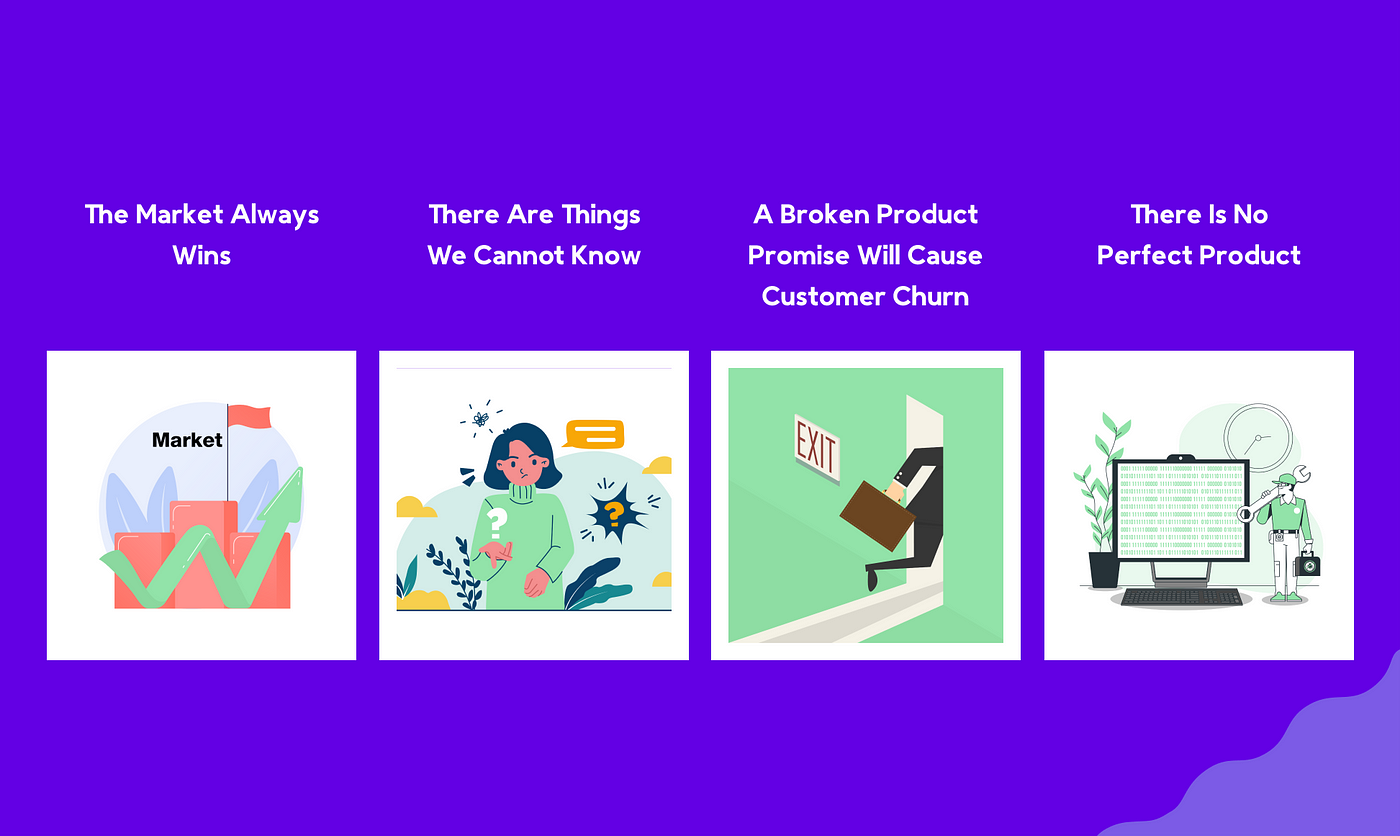
Feel free to comment below. If you enjoyed this list, please hit that clap button to help others find it.
About The Author
Rafayel Mkrtchyan is a product management advisor who helps companies improve their product discovery and delivery processes. He teaches teams how to set up a winning product strategy and sustainable growth model, run customer and product development processes, develop outcome-, growth-, experiment-, and data-driven mindset, as well as robust their lean, agile, and design thinking skills.
Follow him: Medium | Twitter | LinkedIn
More From Rafayel Mkrtchyan On Medium
Recommend
About Joyk
Aggregate valuable and interesting links.
Joyk means Joy of geeK